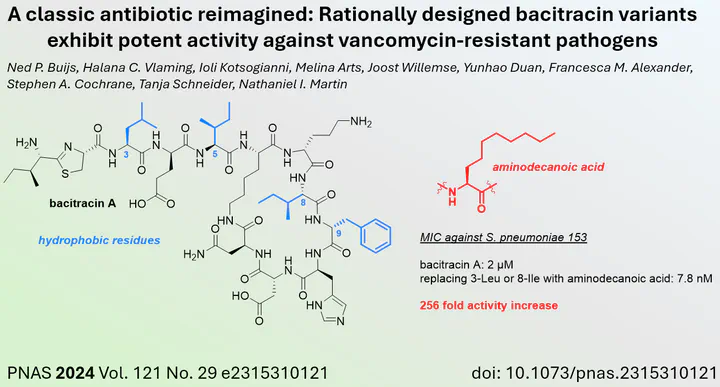Structural Modifications Enhance Antibacterial Potency of Bacitracin

Bacitracin is a polypeptide antibiotic that is widely used in topical ointments for its antimicrobial properties. In a recent study published in PNAS, a research team led by Nathaniel Martin from Leiden University reported that slight structural modifications to bacitracin resulted in a 256-fold increase in activity against Streptococcus pneumoniae.
The study built upon the elucidation of bacitracin’s X-ray crystal structure with its target in 2013 (PDB: 4K7T). The researchers observed that the non-polar side chains of certain amino acid residues (Leu3, Ile5, Ile8, Phe9) all pointed in the same direction. They hypothesized that making these side chains more lipophilic could enhance the compound’s bacterial membrane anchoring and increase hydrophobic interactions with the target.
After preparing 20 bacitracin analogues, the team evaluated their biological activity. The results showed that some structural modifications significantly improved the antibacterial potency, including against vancomycin-resistant bacterial strains. Importantly, the new analogues maintained the same mechanism of action as the parent bacitracin compound, but did not require supplemental zinc ions to exert their effects.
Overall, this study demonstrates how rational structural modifications can enhance the therapeutic potential of an established antibiotic like bacitracin.
Read more: A classic antibiotic reimagined: Rationally designed bacitracin variants exhibit potent activity against vancomycin-resistant pathogens 10.1073/pnas.2315310121